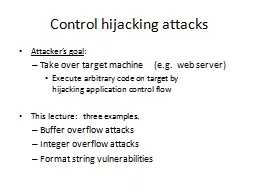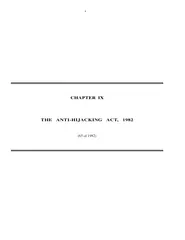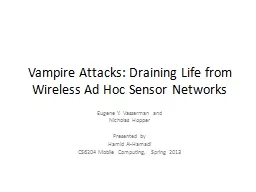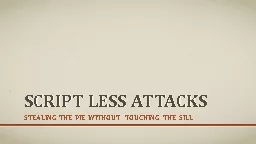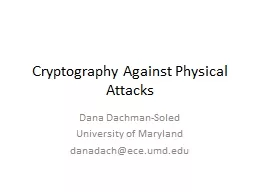PPT-Control hijacking attacks
Author : debby-jeon | Published Date : 2015-09-21
Attackers goal Take over target machine eg web server Execute arbitrary code on target by hijacking application control flow This lecture three examples Buffer
Presentation Embed Code
Download Presentation
Download Presentation The PPT/PDF document "Control hijacking attacks" is the property of its rightful owner. Permission is granted to download and print the materials on this website for personal, non-commercial use only, and to display it on your personal computer provided you do not modify the materials and that you retain all copyright notices contained in the materials. By downloading content from our website, you accept the terms of this agreement.
Control hijacking attacks: Transcript
Download Rules Of Document
"Control hijacking attacks"The content belongs to its owner. You may download and print it for personal use, without modification, and keep all copyright notices. By downloading, you agree to these terms.
Related Documents

